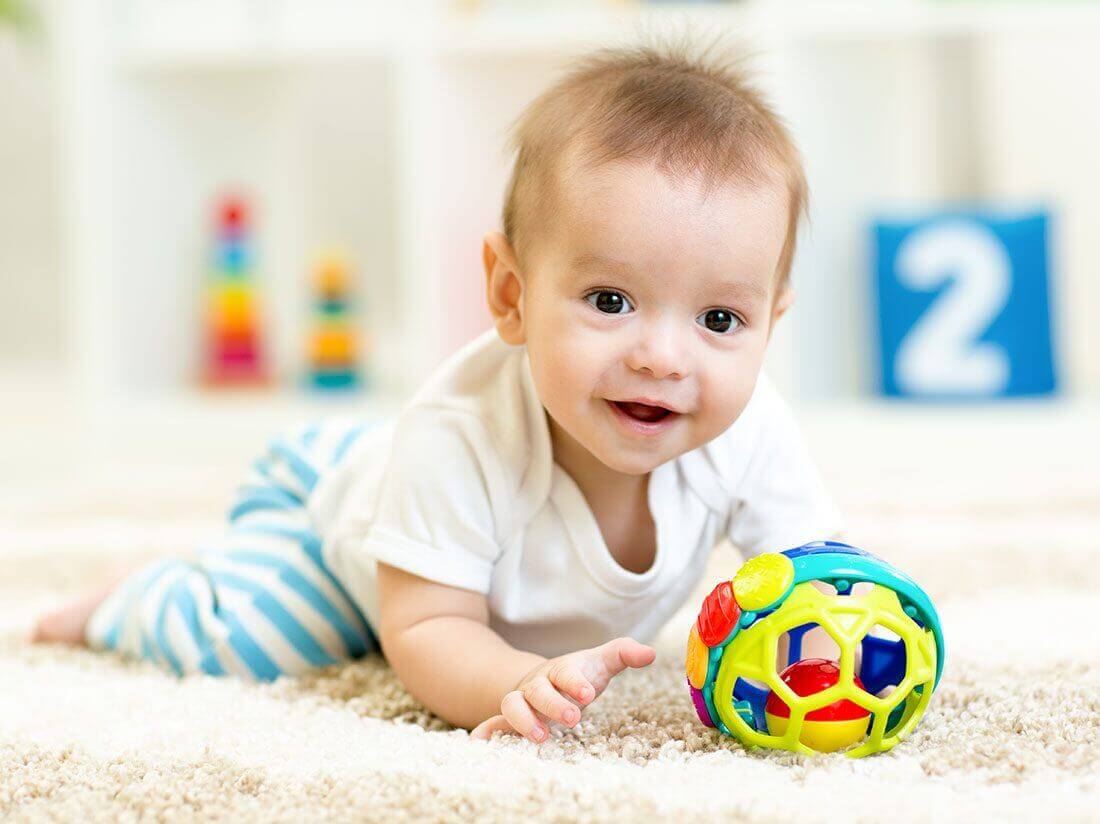
Baby Milestones 0 To 3 Months
30 May 2022 | 4 min Read
Tinystep
Author | 2574 Articles
It’s important you track your baby’s development because this is the time the baby learns all kinds of things and it’s a combination of firsts. In this article, we will be covering four major milestones — Head lifts, the first smile, first sounds, and development of sight. Let’s get started.

1) Head Lifts
From the 1st month onwards give your baby some tummy time. Putting your baby on its tummy for a few minutes will help the baby work on its neck, chest, and arm muscles. In a day, you can put your baby on its tummy for at least 2-3 times. Though it’s not advisable to do it just after a feed.
If the baby is struggling too much even towards the third month, the mother can help the baby by putting its forearms below the baby’s face for support.
You need to worry only if the baby is facing difficulty in lifting the head at all, or if the baby is completely stiff, or pushes back with head when lying on the back.
2) First Smile
Until the baby is 1-month-old, the reason for smiling could be the baby has passed gas, urinated, or sleeping comfortably. The first social smile is usually between 4-6 weeks. While it is said that a delay in smile could be that your baby is autistic, it wouldn’t hold true for the babies who vocalizes, responds to cues, and makes eye contact.
Don’t overthink already! Here what you can do to help your baby discover smiling: Smile to your baby, talk to the baby often, and cuddle with it. Giving your baby a lot of personal care and affection leads to the baby developing faster and they tend to be more social.
You need to worry only if the baby isn’t giving any eye contact at all and smiling even when your face is near it.
3) First Sounds
From the first few weeks itself, you’ll notice your baby trying to make sounds. No, we aren’t talking about crying or burping. If you respond to your baby’s sounds, in the same manner, it gives them immense pleasure and encouragement.
Try to have normal conversations with your baby, readout books, show the baby colors, and so on to engage the baby. This will push the baby to try and imitate voices.
You need to worry only if the baby doesn’t cry when hungry or uncomfortable or doesn’t respond to loud noises.
4) Sight
Since the baby is near-sighted, you’ll have to take things (toys, object, and yourself) closer to the baby’s face and make sounds.
By the first month, your baby would’ve learned to focus with both eyes. Take a object and keep it close to your baby’s face and move it around slowly. You’ll notice the baby’s eyes will move along the object.
By the second month, you can move on to more detailed and complicated designs, shapes, and colors. Use toys and cloth books to help your baby learn.
By the third month, the baby starts recognising objects and people better and may even try to reach for objects. And in the case of a parent they’re sure to react differently when they see or smell you around.
You need to worry only if after trying persistently the baby still doesn’t move its eyes along with the object or doesn’t enjoy movement.
Is your baby developing well?
If you’ve got a premature (before 37 weeks) baby, it’s natural that the baby will take time to develop. In such a case, your baby will have two ages. One will be calculated from the date the baby was born and the other from the baby’s actual due date. Always assess your baby’s development against its actual due date and not the date the baby was born.
One very important point every parent must remember is that every child has its own speed and way of developing. We have mentioned ideal milestones and there’s nothing to worry if they develop early or a little late.
Blog Contributed By Shikha Bhatnagar.
A


Suggestions offered by doctors on BabyChakra are of advisory nature i.e., for educational and informational purposes only. Content posted on, created for, or compiled by BabyChakra is not intended or designed to replace your doctor's independent judgment about any symptom, condition, or the appropriateness or risks of a procedure or treatment for a given person.
